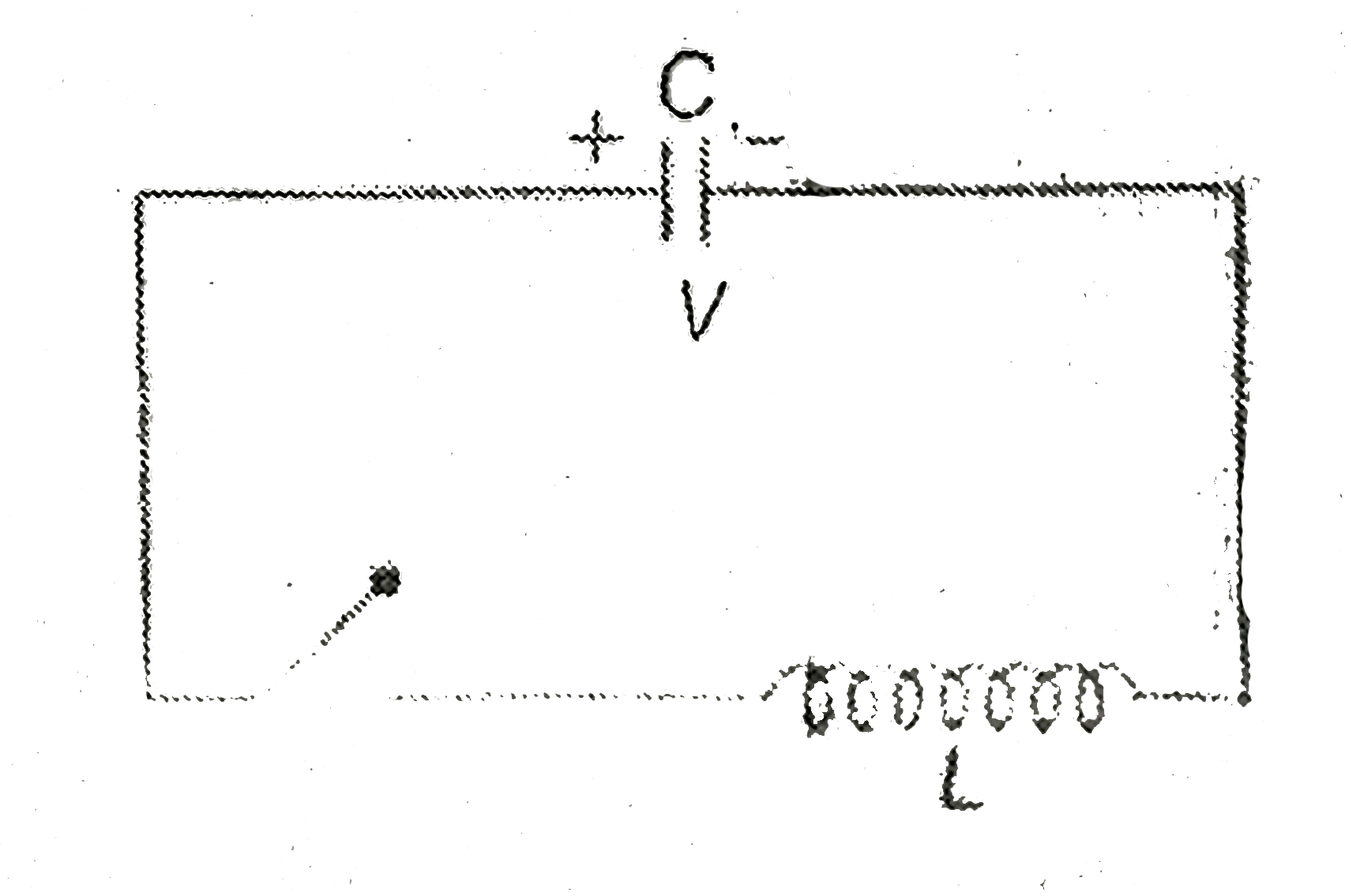A capacitor of capacitance C is charged to a potential difference V from a cell and then disconncted from it. A charge +Q is now given to its positive plate. The potential difference across the capacitor is now
V
V+QC
V+Q2C
V−QC if Q<CV
The correct Answer is:C
To solve the problem step by step, let's break down the process of determining the potential difference across the capacitor after a charge +Q is added to its positive plate.
1. Initial Conditions:
- A capacitor of capacitance C is charged to a potential difference V.
- The initial charge Qinitial on the capacitor can be calculated using the formula:
Qinitial=C⋅V
2. Disconnecting the Capacitor:
- After charging, the capacitor is disconnected from the cell. The charge on the plates remains constant at Qinitial.
3. Adding Charge +Q:
- A charge +Q is added to the positive plate of the capacitor.
- The new charge on the positive plate becomes:
Qpositive=Qinitial+Q
- The charge on the negative plate remains unchanged, which is Qinitial.
4. Calculating the New Charge:
- The total charge on the positive plate after adding +Q:
Qpositive=C⋅V+Q
- The charge on the negative plate is still:
Qnegative=C⋅V
5. Using Charge Conservation:
- For the capacitor, the charge on the plates can be expressed as:
Qpositive=Qnegative+Qadded
- Here, Qadded=+Q.
6. Finding the New Potential Difference:
- The potential difference V′ across the capacitor can be calculated using the new charge on the positive plate:
V′=QpositiveC=C⋅V+QC
- Simplifying this expression gives:
V′=V+QC
7. Final Result:
- Thus, the potential difference across the capacitor after adding the charge +Q is:
V′=V+QC
Final Answer:
The potential difference across the capacitor is V+QC.
---
- A capacitor of capacitance C is charged to a potential difference V.
- The initial charge Qinitial on the capacitor can be calculated using the formula:
Qinitial=C⋅V
- After charging, the capacitor is disconnected from the cell. The charge on the plates remains constant at Qinitial.
- A charge +Q is added to the positive plate of the capacitor.
- The new charge on the positive plate becomes:
Qpositive=Qinitial+Q
- The charge on the negative plate remains unchanged, which is Qinitial.
- The total charge on the positive plate after adding +Q:
Qpositive=C⋅V+Q
- The charge on the negative plate is still:
Qnegative=C⋅V
- For the capacitor, the charge on the plates can be expressed as:
Qpositive=Qnegative+Qadded
- Here, Qadded=+Q.
- The potential difference V′ across the capacitor can be calculated using the new charge on the positive plate:
V′=QpositiveC=C⋅V+QC
- Simplifying this expression gives:
V′=V+QC
- Thus, the potential difference across the capacitor after adding the charge +Q is:
V′=V+QC
The potential difference across the capacitor is V+QC.
Topper's Solved these Questions
- CAPACITORSBOOK - DC PANDEY ENGLISHCHAPTER - CAPACITORSEXERCISE - OBJECTIVE_TYPE
1 Videos
- CAPACITORSBOOK - DC PANDEY ENGLISHCHAPTER - CAPACITORSEXERCISE - OBJECTIVE_TYPE
1 Videos
- ATOMSBOOK - DC PANDEY ENGLISHCHAPTER - ATOMSEXERCISE - MEDICAL ENTRANCES GALLERY
42 Videos
- COMMUNICATION SYSTEMBOOK - DC PANDEY ENGLISHCHAPTER - COMMUNICATION SYSTEMEXERCISE - Subjective
11 Videos
Similar Questions
Knowledge Check
A capacitor or capacitance C1 is charge to a potential V and then connected in parallel to an uncharged capacitor of capacitance C2. The fianl potential difference across each capacitor will be
AC1VC1+C2BC2VC1+C2C1+C2C1D1−C2C1
A capacitor of capacity 2μF is charged to a potential difference of 12V. It is then connected across an inductor of inductance 6μH. At an instant when potential difference across the capacitor is 6V, what is the current(in A)?
View SolutionA capacitor of capacitance C is charged to a potential difference V0. The charged battery is disconnected and the capacitor is connected to a capacitor of unknown capacitance Cx. The potential difference across the combination is V. The value of Cx should be
View SolutionFind charge on each capacitor and potential difference across each capacitor .

View SolutionA capacitor of capacitance 10μF is charged to a potential 50V with a battery. The battery is now disconnected and an additional charge 200μC is given to the positive plate of the capacitor. The potential difference across the capacitor will be.
View SolutionA 100μF capacitor is charged to a potential difference of 24V. It is connected to an uncharged capacitor of capacitance 20μF What will be the new potential difference across the 100μF capacitor?
View SolutionA capacitor of capacity C is charged to a potential difference V and another capacitor of capacity 2C is charged to a potential difference 4V. The charged batteries are disconnected and the two capacitors are connected with reverse polarity (i.e. positive plate of first capacitor is connected to negative plate of second capacitor). The heat produced during the redistribution of charge between the capacitors will be
View SolutionA capacitor of capacitance C is charged to a potential difference V0 and then connected with a resistance and a battery of EMF 3V0 such that the positively charged plate of the capacitor is connected to the positive terminal of the battery. The total heat generated in the resistance until the current in the circuit becomes zero is n(CV20). the value of n is ________.
View Solution


